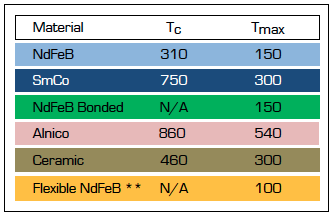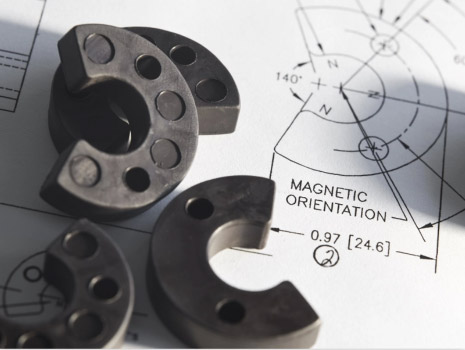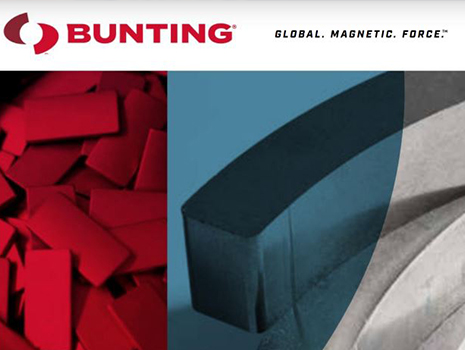
Magnet Stability
Endless Ability
The ability of a permanent magnet to support an external magnetic field results from small magnetic domains “locked” into position by crystal anisotropy within the magnet material. Once established by initial magnetization, these positions are held until acted upon by forces exceeding those which lock the domains. The energy required to disturb the magnetic field produced by a magnet varies for each type of material. Permanent magnets can be produced with extremely high coercive forces (Hc) which will maintain domain alignment in the presence of high external magnetic fields. Stability can be described as the repeated magnetic performance of a material under specific conditions over the life of the magnet.
Factors affecting magnet stability include time, temperature, reluctance changes, adverse fields, radiation, shock, stress, and vibration.
Time
The effect of time on modern permanent magnets is minimal. Studies have shown that permanent magnets will see changes immediately after magnetization. These changes, known as “magnetic creep” occur as less stable domains are affected by fluctuations in thermal or magnetic energy, even in a thermally stable environment. This varies as the number of unstable domains decreases. Rare Earth magnets are not as likely to experience this effect because of their extremely high coercivities. Long term time versus flux studies have shown that a newly magnetized magnet will lose a minor percent of its flux as a function of age. Over 100,000 hours, these losses are in the range of essentially zero for Samarium Cobalt materials to less than 3% for Alnico 5 materials at low permeance coefficients.
Temperature
Temperature effects fall into three categories:
- Reversible losses.
- Irreversible but recoverable losses.
- Irreversible and unrecoverable losses.
Reversible Losses
These are losses that are recovered when the magnet returns to its original temperature. Reversible losses cannot be eliminated by magnet stabilization. Reversible losses are described by the Reversible Temperature Coefficients (Tc). Tc is expressed as % per degree C. These figures vary for specific grades of each material as a whole. It is because the temperature coefficients of Br and Hc are significantly different that the demagnetized curve develops a “knee” at elevated temperatures.
Irreversible but Recoverable Losses
These losses are defined as partial demagnetization of the magnet from exposure to high or low temperatures. These losses are only recoverable by remagnetization, and are not recovered when the temperature returns to its original value. These losses occur when the operating point of the magnet falls below the knee of the demagnetization curve. An efficient permanent magnet design should have a magnetic circuit in which the magnet operates at a permeance coefficient above the knee of the demagnetization curve at expected elevated temperatures. This will prevent performance variations at elevated temperatures.
Irreversible and Unrecoverable Losses
Metallurgical changes occur in magnets exposed to very high temperatures and are not recoverable by remagnetization. The table below shows examples of critical temperatures for the various materials where:
- Tcurie is the Curie Temperature at which the elementary magnetic moments are randomized and the material is demagnetized.
- Tmax is the maximum practical operating temperatures in air, for general classes of major materials. Different grades of each material exhibit values differing from the values shown below.

** Due to the bonding agents used, flexible magnets may not operate at temperatures above 100°C
Partially demagnetizing a magnet by exposure to elevated temperatures in a controlled manner stabilizes the magnet with respect to temperature. The slight reduction in flux density improves a magnet’s stability because domains with low commitment to orientation are the first to lose their orientations. A magnet thus stabilized will exhibit constant flux when exposed to equivalent or lesser temperatures.





